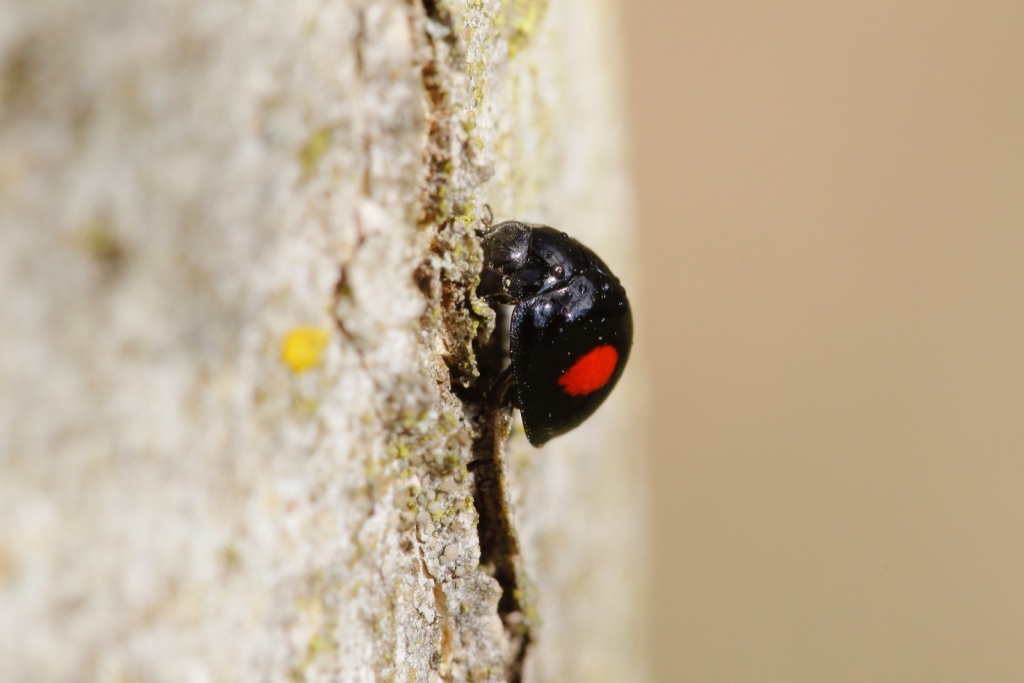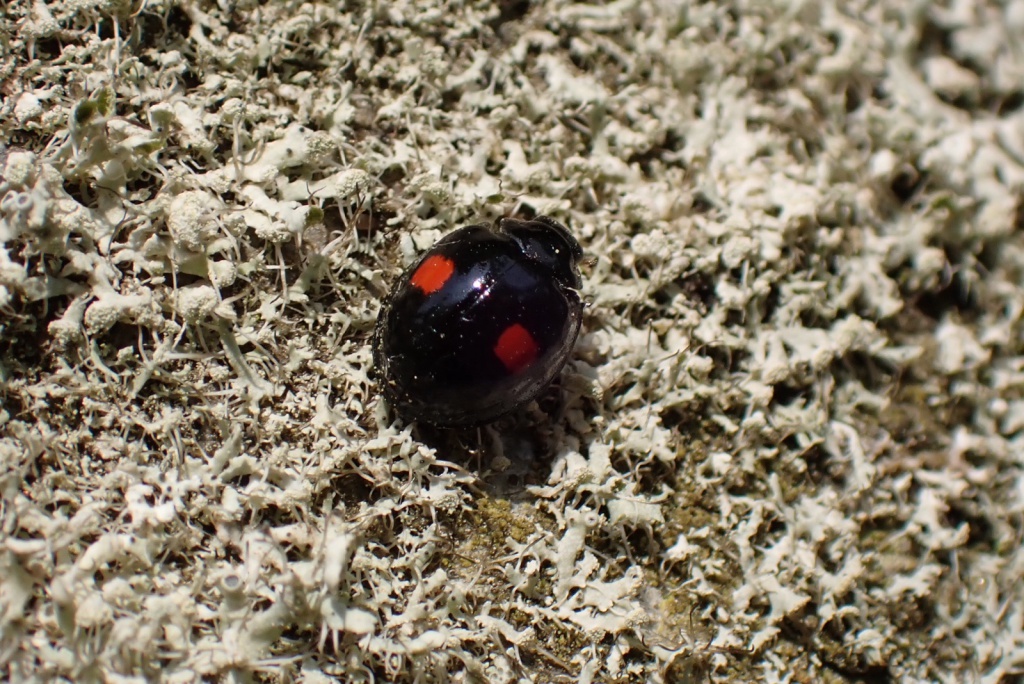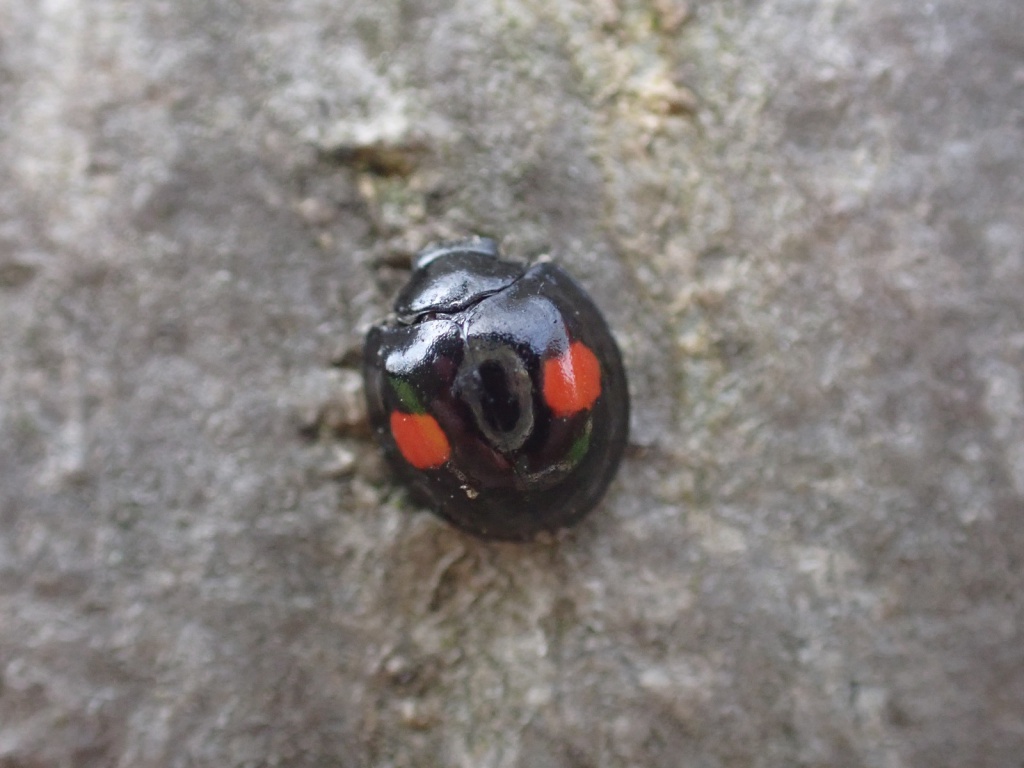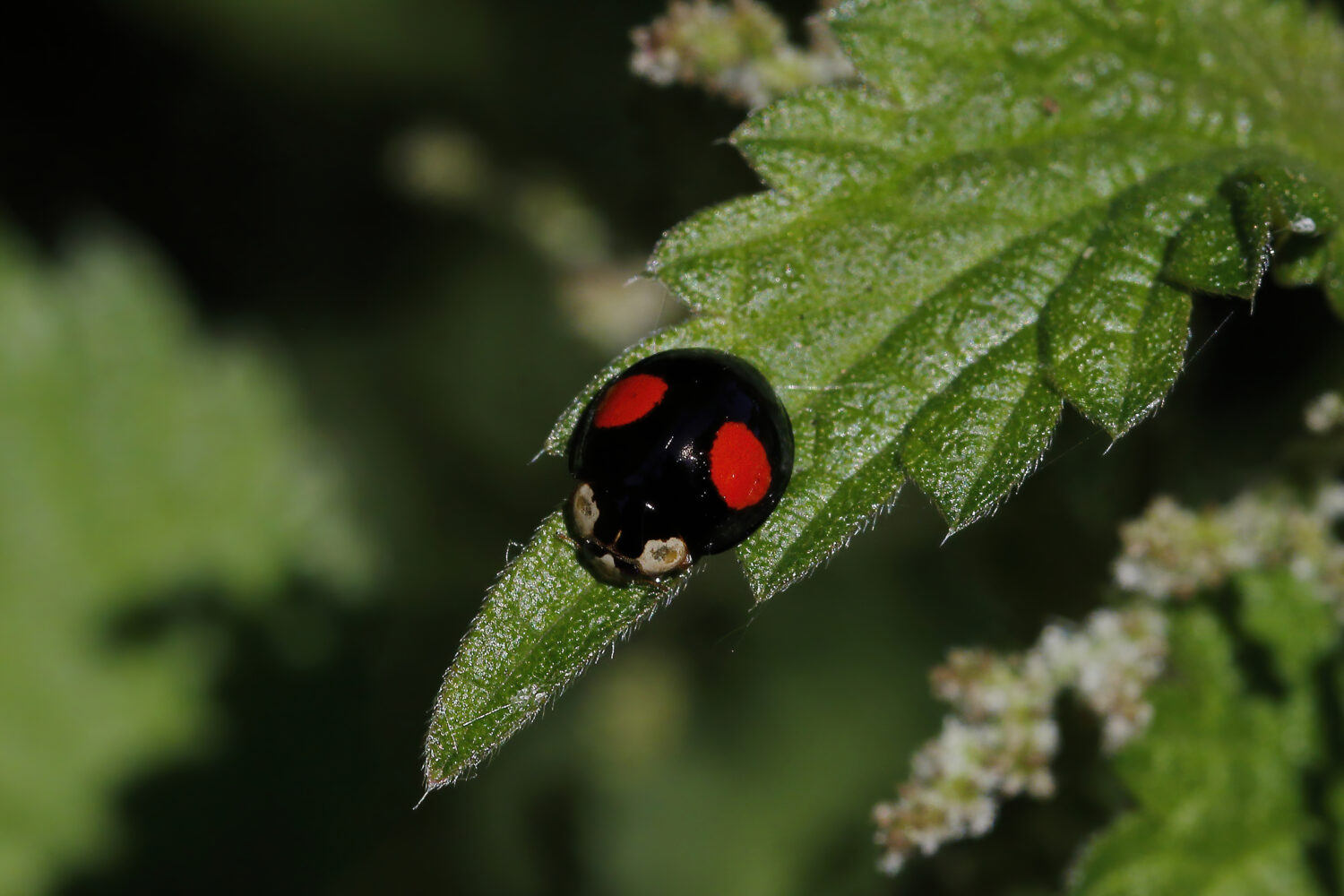A black ladybird with two large red spots, the Kidney-spot is a small but distinctive ladybird closely associated with Ash and Willow
Fast facts
- Common name
- Kidney-spot Ladybird
- Scientific name
- Chilocorus renipustulatus
- When to see it
- Year round
- Diet
- Scale insects
Description
Commonly found in woodland settings, this species is a black ladybird with two red spots.
Identification
The Kidney-spot Ladybird is a small (4 – 5mm) black ladybird with two round red spots. Distinctively domed, it also has a rim around the edge of its wing cases. The pronotum is black and its underside is a vivid orange.
Similar species
Melanic forms of the Harlequin Ladybird can appear similar. However, the Kidney-spot is smaller and the pronotum is entirely black. Harlequins are 5 – 8 mm and the pronotum is usually white with black markings.
Ecology
Commonly found in woodland, the Kidney-spot Ladybird is typically associated with Ash and sallow trees. However, it can be observed on a wide range of trees from Leyland Cypress to Oak. A predatory ladybird, it feeds on small scale insects.

Spotted this ladybird?
Think you’ve spotted this ladybird? Share your sighting with the North East Ladybird Spot to contribute to the conservation and study of our region’s ladybirds.
Regional distribution
Sightings of the Kidney-spot have been shared from both Northumberland and County Durham. Most records are from lowland and urban areas, with a few records from the uplands. Given its small size, it is likely under-recorded in the region. Nationally, it is considered a widespread ladybird.
Did you know?
During winter, you will likely find this ladybird overwintering near the bases of deciduous trees.


